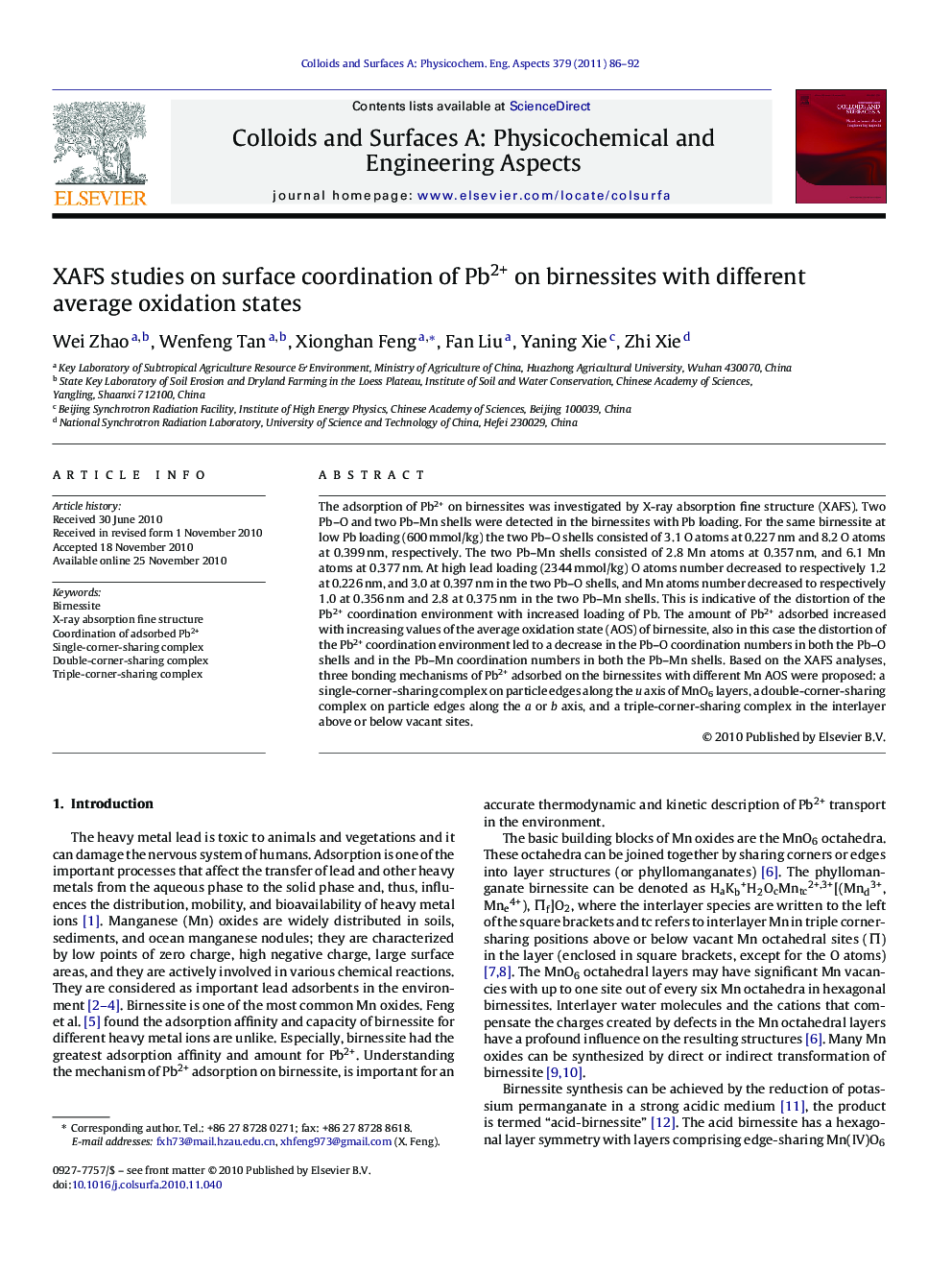| Article ID | Journal | Published Year | Pages | File Type |
|---|---|---|---|---|
| 594920 | Colloids and Surfaces A: Physicochemical and Engineering Aspects | 2011 | 7 Pages |
The adsorption of Pb2+ on birnessites was investigated by X-ray absorption fine structure (XAFS). Two Pb–O and two Pb–Mn shells were detected in the birnessites with Pb loading. For the same birnessite at low Pb loading (600 mmol/kg) the two Pb–O shells consisted of 3.1 O atoms at 0.227 nm and 8.2 O atoms at 0.399 nm, respectively. The two Pb–Mn shells consisted of 2.8 Mn atoms at 0.357 nm, and 6.1 Mn atoms at 0.377 nm. At high lead loading (2344 mmol/kg) O atoms number decreased to respectively 1.2 at 0.226 nm, and 3.0 at 0.397 nm in the two Pb–O shells, and Mn atoms number decreased to respectively 1.0 at 0.356 nm and 2.8 at 0.375 nm in the two Pb–Mn shells. This is indicative of the distortion of the Pb2+ coordination environment with increased loading of Pb. The amount of Pb2+ adsorbed increased with increasing values of the average oxidation state (AOS) of birnessite, also in this case the distortion of the Pb2+ coordination environment led to a decrease in the Pb–O coordination numbers in both the Pb–O shells and in the Pb–Mn coordination numbers in both the Pb–Mn shells. Based on the XAFS analyses, three bonding mechanisms of Pb2+ adsorbed on the birnessites with different Mn AOS were proposed: a single-corner-sharing complex on particle edges along the u axis of MnO6 layers, a double-corner-sharing complex on particle edges along the a or b axis, and a triple-corner-sharing complex in the interlayer above or below vacant sites.
